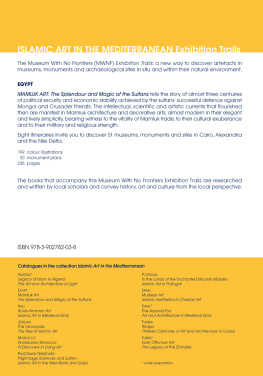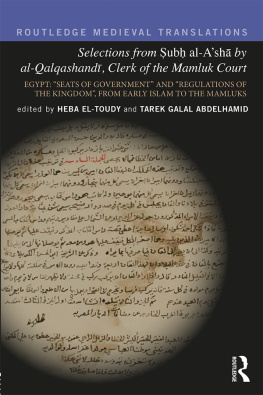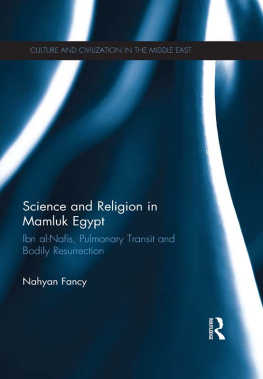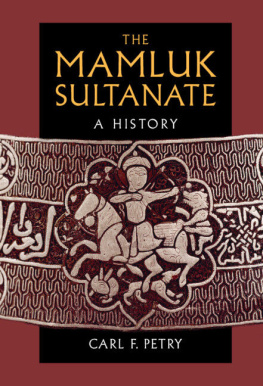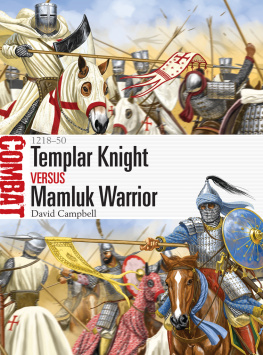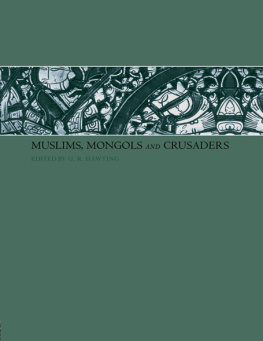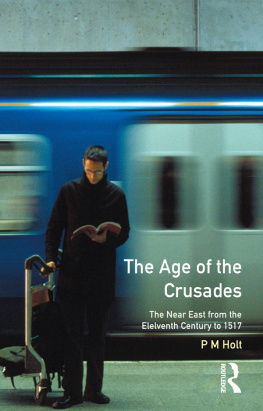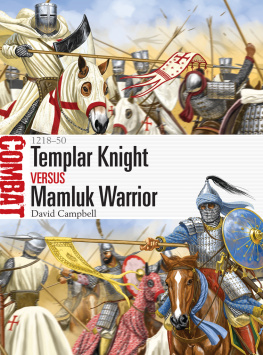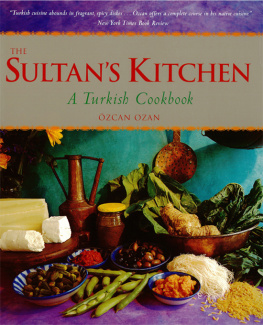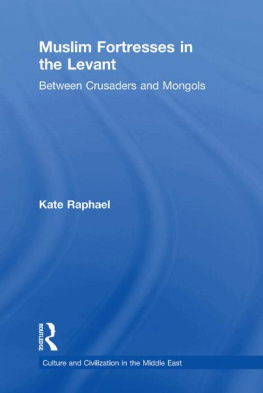Front cover
Madrasa and Mosque of Sultan Qaytbay, Dome of the Mausoleum,
9th/15th century, North Cemetery, Cairo.
Museum With No Frontiers Exhibition Trails
ISLAMIC ART IN THE MEDITERRANEAN | EGYPT
Mamluk Art
The Splendour and Magic of the Sultans
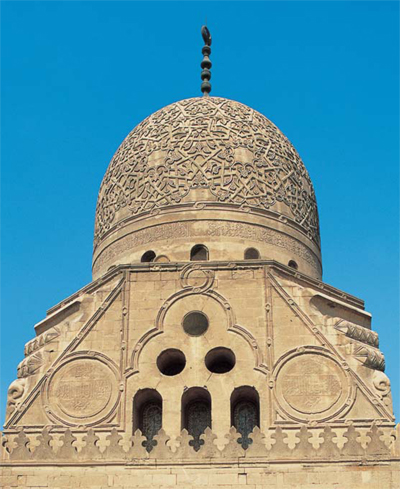
Museum With No Frontiers

EUROPEAN UNION
Euromed Heritage | The realisation of the MWNF Exhibition Trail
MAMLUK ART: The Splendour and Magic of the Sultans
has been co-financed by the European Union within the framework
of the Euromed Heritage programme
and has received the support of the following Egyptian institutions: |
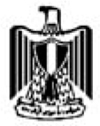
Ministry of Culture
Arab Republic of Egypt | Foreign Cultural Relations Department
Ministry of Culture, Arab Republic of Egypt |

Foreign Cultural Relations
Department |

Supreme Council of Antiquities | Supreme Council of Antiquities,
Ministry of Culture, Arab Republic of Egypt
|
First edition
2001 Ministry of Culture, Arab Republic of Egypt & Museum With No Frontiers (texts and illustrations)
2001 Electa (Grijalbo Mondadori S.A.), Madrid, Spain & Museum With No Frontiers
2001 Al-Dar Al-Masriah Al-Lubnaniah, Cairo, Egypt
Second edition
2010 Ministry of Culture, Arab Republic of Egypt & Museum With No Frontiers (texts and illustrations)
2010 Museum With No Frontiers
ISBN: 978-3-902782-03-8
All rights reserved.
Information
www.museumwnf.org
www.mwnfbooks.net
Museum With No Frontiers
Idea and overall concept
Eva Schubert
Head of Project
Enaam Selim, Cairo
Coordinator of the Curatorial Committee
Abdullah Abdel Hamid El-Attar, Cairo
Curatorial Committee
Gaballah Ali Gaballah, Cairo
Abdullah Abdel Hamid El-Attar, Cairo
Enaam Selim, Cairo
Mohamed Hossam El-Din, Cairo
Salah El-Bahnasi, Cairo
Mohamed Abd El-Aziz, Cairo
Atef Abdel Hamid Ghoneim, Cairo
Medhat El-Manabbawi, Cairo
Ali Ateya, Cairo
Tarek Torky, Cairo
Gamal Gad El-Rab, Cairo
Catalogue
Introductions
Salah El-Bahnasi, Cairo
Mohamed Hossam El-Din, Cairo
Mohamed Abd El-Aziz El-Sayed, Cairo
Tarek Torky, Cairo
Presentation of the Itineraries
Curatorial Committee
Technical texts
Tarek Torky, Cairo
Technical supervision
Sakina Missoum, Madrid
Photography
Sherif Sonbol, Cairo
General map
Jos Antonio Dvila Buitrn, Madrid
Sketches
Mohammed Rushdy, Cairo
Sergio Viguera, Madrid
Monument plans
Mohammed Rushdy, Cairo
akir akmak, Izmir
Ertan Da, Izmir
Yekta Demiralp, Izmir
Sergio Viguera, Madrid
General Introduction
Islamic Art in the Mediterranean
Text
Jamila Binous, Tunisia
Mahmoud Hawari, East Jerusalem
Manuela Marn, Madrid
Gnl ney, Izmir
Maps
akir akmak,
Izmir Ertan Da,
Izmir Yekta Demiralp, Izmir
Translation
Sarah Walker, Madrid
Copy editor
Mandi Gomez, London
Layout and design
Augustina Fernndez,
Electa Espaa, Madrid
Christian Eckart,
MWNF, Vienna (2nd edition)
Local coordination
Production Manager
Tarek Torky, Cairo
Production Assistant
Amal Mohammed Tawfik, Cairo
International coordination
Overall coordination
Eva Schubert
Curatorial committees, translations, editing and production of the catalogues (1st edition)
Sakina Missoum, Madrid
Acknowledgements
We thank the following institutions for their support:
Ministry of Culture, Arab Republic of Egypt, Cairo
Supreme Council of Antiquities, Ministry of Culture, Cairo
Foreign Cultural Relations Department, Ministry of Culture, Cairo
Archaeological Sites in Egypt, Supreme Council of Antiquities
Centre for Documentation of Coptic and Islamic Monuments, Supreme Council of Antiquities, Cairo
Museum of Islamic Art, Cairo
Governorate of Cairo
Governorate of Alexandria
Governorate of Kafr al-Shaykh
Governorate of al-Beheira
Tourism Promotion Authority, Cairo
We would also like to thank:
The Spanish Ministry of Foreign Affairs and Cooperation, Spanish Agency for International Development Cooperation
The Spanish Ministry of Culture
The Federal Ministry of Foreign and European Affairs, Austria
The Ministry of Cultural Heritage and Cultural Activities (National Museum for Oriental Arts, Rome), Italy
The Secretary of State for Tourism, Portugal
The Museum of Mediterranean and Near-Eastern Antiquities, Stockholm, Sweden
as well as
The Regional Government of Tyrol (Austria), where the MWNF Exhibition Trails pilot project was set up
and Doctor Christian Rgnier, Attach to Parisian Hospitals, International Society for the History of Medicine.
Photographic references
See , and
Ann & Peter Jousiffe (London), (Aleppo)
Archivos Oronoz Fotgrafos (Madrid), (Alhambra, Granada)
Plan references
R. Ettinghaussen and O. Grabar (Madrid, I, 1997), (Mosque of Damascus)
Z. Snmez (Ankara, 1995), page 27 (Mosque of Divrigi and Istanbul) and (Mosque of Sivas)
Sergio Viguera (Madrid), (Minaret styles)
Blair, S. S., and Bloom, J. M. (Madrid, II, 1999), (Mosque and Madrasa Sultan Hassan).
R. Ettinghaussen and O. Grabar (Madrid, I, 1997), (Qasr al-Khayr al-Sharqi)
A. Kuran (Istanbul, 1986), (Khan Sultan Aksaray)
The opinions expressed in this work do not necessarily reflect the opinion either of the European Union or of its Member States.
Preface
In 1996 Museum With No Frontiers (MWNF) initiated a comprehensive programme to research, document and increase knowledge and public awareness of the history and cultural legacy of Islam in the countries surrounding the Mediterranean basin. This book is one of the outcomes of this programme, which involves hundreds of scholars and is carried out in cooperation with institutions from all the countries concerned. Important initial funding from the European Union made it possible to set the basis for a sustainable network of public and private partners implementing attractive projects in the field of culture, education and tourism.
When the MWNF programme was first launched, the topic of Islamic art and architecture was familiar only to experts and there was an implicit understanding that cultural heritage in the Mediterranean meant the legacy of the classical civilisations. Thanks to the launch coinciding with the establishment at the end of 1995 of the Euro-Mediterranean Partnership, a joint initiative of the European Union and its Mediterranean neighbours, the MWNF programme took off quickly and became a pioneering venture to disseminate knowledge about the world contribution of Islam.

